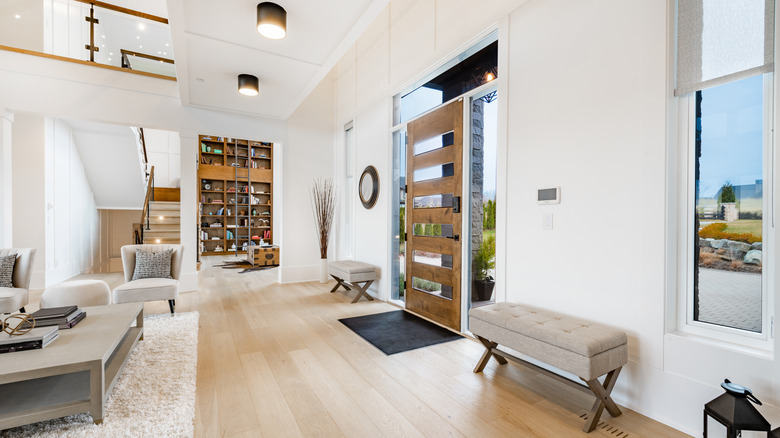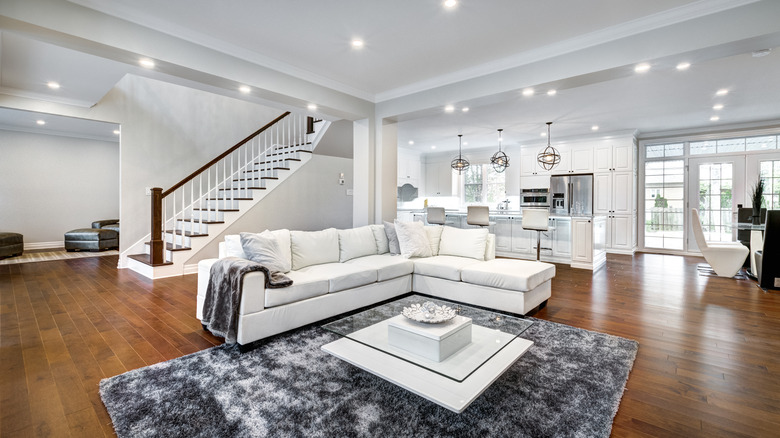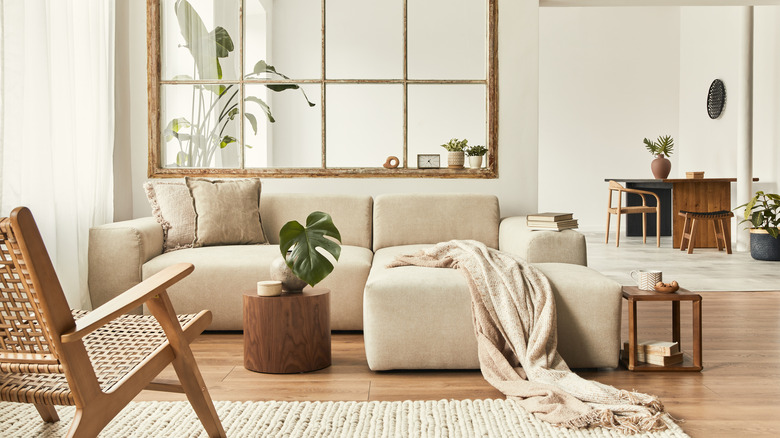Why You Should Pay Extra Attention To Decor At An Open House, According To An Expert
Those in the market for a new home know the telltale signs of a staged house. Decorations won't include images or the stylings of the homeowners themselves, and the furniture might look like it hasn't been lived in at all. Arranging the furniture and other items in a home is important to allow for breathing room in the space (via the National Association of Realtors). No one wants to trip over someone's clunky furniture or expansive collection of artwork when viewing a home, but the décor of a space can go even further in affecting the sale.
In an exclusive interview with House Digest, Jon Sanborn, the co-founder of Brotherly Love Real Estate in Philadelphia, discusses the red flags and trickery that lurk beneath a perfectly staged home. "Dressing up the property is known to have the initial effect on potential homebuyers. Thirty-seven percent of potential homebuyers consider the décor at an open house to be a deciding factor," Sanborn says. "Some brokerages often go out of their way to stage a potential property," bringing in specialized furniture and décor in order to replace the homeowners' existing wares, he notes. Staging a home can be an important part of a seller's process, and it helps prospective buyers get a sense of how the space can be used. Still, remaining cautious and thinking about the space as an empty vessel for your own decorating is critical.
Be proactive and objective
One thing to keep in mind is that a staged home is one that's been set in place for a reason. "Professionally-staged houses can sometimes fool the potential homebuyer or make them see what they want to see," Jon Sanborn says. "In the real estate business, it is a trick to divert the mind of the buyers from potential issues. In such a situation, buyers must be proactive and not let décor take away their attention from the things that matter." In the same way that a murderer in a whodunit TV drama has ample time to rearrange the scene to cover over their tracks, realtors try to patch over potential problem areas (not to say that realtors are like murderers, though!)
Sanborn notes: "I always tell my clients to be objective when it comes to aesthetics. They can always develop their own aesthetics, once they have the home." A staged property is simply one vision of the space that a new buyer might be able to lay the home out in. But in truth, the world's your oyster in a home that you've just bought. You can keep the aesthetic or completely discard it and start from scratch. Therefore, placing too much stock into the layout of the furniture (and the furniture selection itself) is a mistake.
Keep your eyes on the details
There are some strategies that potential buyers should keep in mind when viewing a home that's been set up. "When it comes to an open house, it is all about the details. It cannot just be how well the house is staged," Jon Sanborn cautions. "Potential homebuyers must look beyond a strategically placed rug, or an expensive vase highlighting the décor. The question is, it looks perfect, but are you missing something?"
"Check beneath the rugs, look behind the paintings, and understand the décor to learn how you could make use of it. Be realistic," he says. Staging is designed to accentuate the good qualities of the home and may also potentially trick viewers into glossing over a defect or two. The strategy runs both ways, and so there's no easy way to tell if the real estate agent is looking to hide something or they're just looking to make the home look more presentable to bring in increased interest. Doing your due diligence is important when it comes to the financials of the property, but the work doesn't stop there. Looking around at potential imperfections will give you a better sense of the health of the home beyond the shiny image that a realtor wants you to see.


